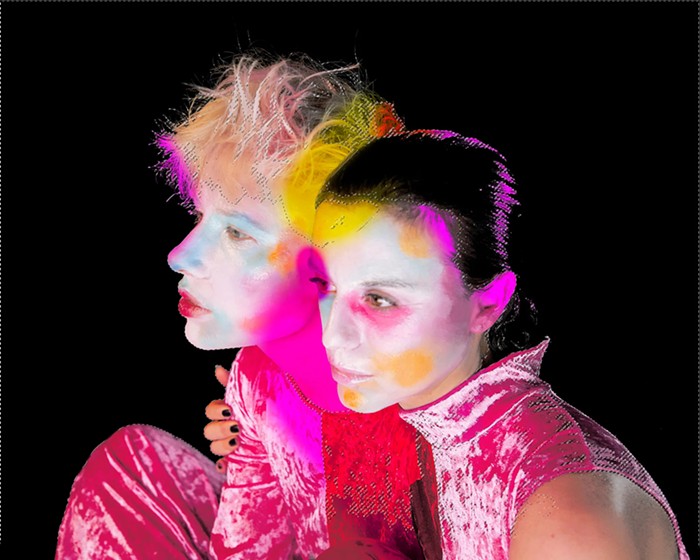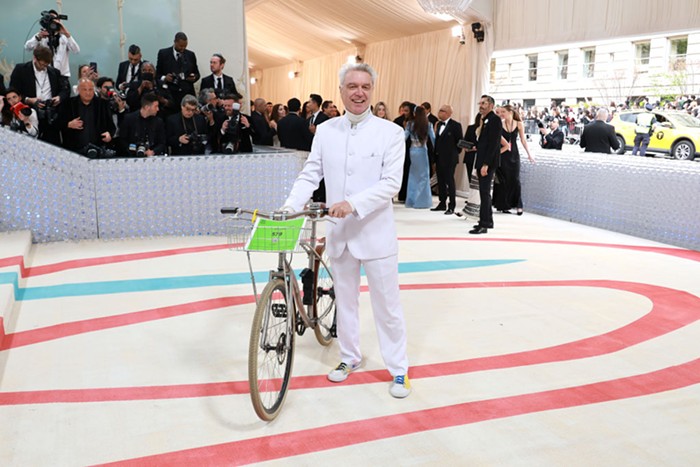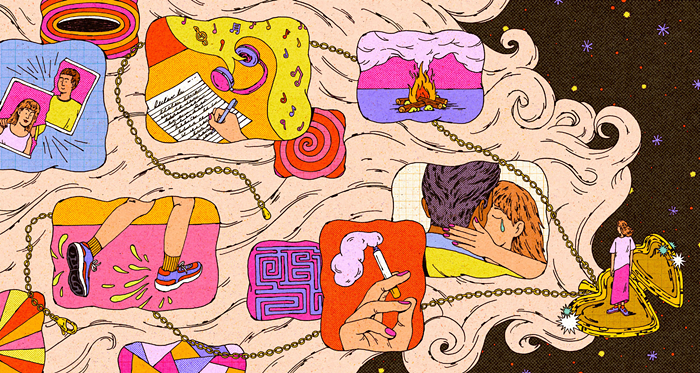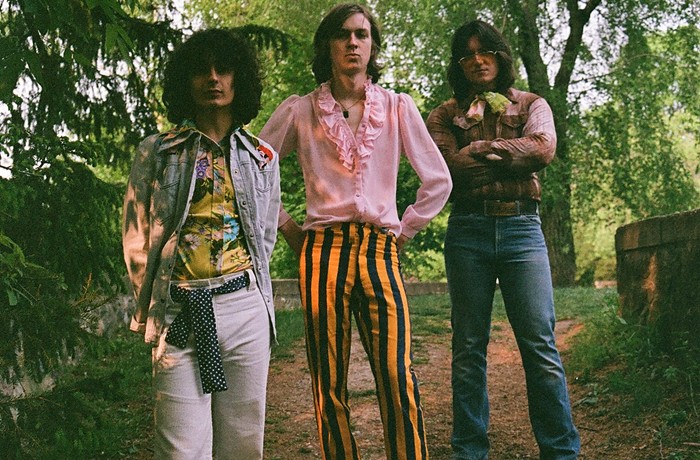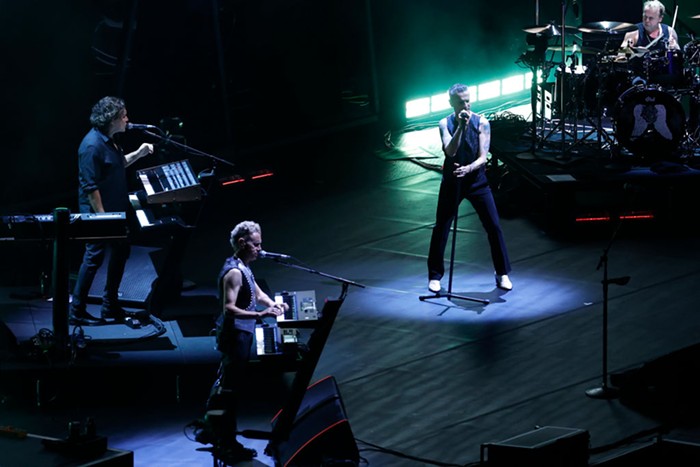
On September 5, German multi-instrumentalist/producer Holger Czukay was found dead in his home, the old CAN studio in Weilerswist, Germany; the cause of death has not been reported. He was 79. His passing marks another dose of bad news for CAN fans, as the band's drummer, Jaki Liebezeit, died in January.
Best known as the bassist for krautrock immortals CAN, Czukay was the impish wild card in that vastly influential band, the Stockhausen disciple with a wicked sense of Dadaist humor and subversiveness. On the bass within the context of CAN, Czukay was a master of minimalism and repetition. This meant that in order to rise to the level of his telepathically dialed-in band mates, he had to devise only the most sublime riffs and find the precise pockets of space in which to insert his bright ideas; at those important tasks, he succeeded with rigorous mischievousness.
Besides providing crucial rhythmic ballast and inventive production techniques to CAN over a decade of innovative releases (he was their studio mastermind and primary cat-herder), Czukay maintained an idiosyncratic solo career marked by a restless and playful exploration of genres, or sly blurring of said genres. He also engaged in several collaborations—with Conny Plank, Brian Eno, Jah Wobble, David Sylvian, among others—that yielded hours of fantastic music. He was an avant-gardist who was unconstitutionally unable to take himself or his art too seriously. Few musicians more fascinatingly leveraged an inveterate impulse to subvert conventions than did Holger Czukay.

Below are 12 tracks that partially define Czukay's singular contributions to music (we'd need a whole book to do justice to the man). Added up, they form an irrefutable argument for his place in whatever pantheon gets erected after the Rock & Roll Hall of Fame crumbles into insignificance.
Technical Space Composer's Crew (Holger Czukay/Rolf Dammers), “Boat Woman Song” (1969). An unbelievably moving piece of world-music sampladelia/homage/plunder on which Czukay and Dammers weave elements of traditional Vietnamese music—two female vocalists singing a melody of utmost poignancy—through their own (or is it?) hypnotic loops of what sounds like an unconventional stringed instrument and warped, eerie sound treatments of the source material. Better believe Brian Eno and David Byrne took inspiration from this for My Life in the Bush of Ghosts.
CAN, “Little Star of Bethlehem” (1969). Czukay flaunts a sly, lithe funkiness on this showcase for Malcolm Mooney to wax cryptic about “silent invisible conversation” and “water lilies in your bathtub.” By the way, this track segues well into Van Morrison's “T.B. Sheets.”
CAN, “Father Cannot Yell” (1969). The fast and bulbous bass line that snakes through one of CAN's most claustrophobic and gripping works masterfully ratchets up the tension and reflects the madness of a mind under unbearable stress and confusion (i.e., singer Malcolm Mooney's persona in this masterpiece). "Father Cannot Yell" was the first CAN song I ever heard, and it hooked me in the first five seconds. Lifelong fandom ensued. True story.
CAN, “Yoo Doo Right” (1969). If you can listen to this 20-minute tribal-pop opus and not be agog at Czukay's earth-moving yet ebullient bass wrangling here, I feel bad for you. The chord progressions won't impress Jaco Pastorius fanboys, but for the purposes of this inspirational, mesmerizing love song, Czukay is the four-string hero, the force that elevates singer Malcolm Mooney to bellow his ever-loving heart out.
CAN, “Mother Sky” (1970). Czukay's trampoline-taut bass bulges propel this piece just as crucially as do Jaki Liebezeit's masterly motorik groove and Michael Karoli's acidic guitar strafes, helping to make "Mother Sky" one of the most thrilling things ever laid to tape. Sure, what Czukay's doing here is relatively simple, but it is so perfect—the pulsating eye of the hurricane, as well as an unparalleled exercise in maximizing drama with as few notes as possible. (Pro tip: Only accept the full 14-minute version.)
CAN, “Halleluwah” (1971). This grandiloquent, strutting orgy of mutant funk might be the epitome of Czukay and Liebezeit's blood-brotherly bond in rhythmagic. They lock upon one of those grooves that you never want to end, because the euphoria it brings is so goddamned addictive and beneficial, life seems hollow without it. "Halleluwah"—a mere tease at 18-plus minutes.
CAN, "Cutaway" (1975). A phenomenal collage that encompasses several obscure, otherworldly sonic events, stitched together with an unerring ear for suspense, surprise, and timbral oddity. Holger in the lab messin' with his mates' raw materials always results in memorable experiences.
Les Vampyrettes, “Biomutanten” (1980). The sickest, scariest song in recorded history, this dread, industrial-gothic grotesquerie features Czukay and krautrock producer extraordinaire Conny Plank getting H.R. Giger-esque in the studio. I dare you to play the 12-inch at 33 1/3. “Biomutanten” is so striking, I led off a podcast mix with it.
Holger Czukay, “On the Way to the Peak of Normal” (1981). Displays Czukay's deft ear for music that eludes easy categorization. There's something about this odd track that evokes espionage, exotica, and porn-flick scores. By the way, this track segues well into Wolfgang Dauner Quintet's “My Man's Gone Now.”
Holger Czukay/Jah Wobble/Jaki Liebezeit, “Full Circle (R.P.S. No. 7)” (1982). Linking up with PiL's world-class bassist was a genius move by Czukay. One, it allowed him to relinquish low-end duties and focus on high-end embellishing and his shockingly lissome way with guitar. Two, it unleashed the CAN man's dormant, exceptional dub proclivities. "Full Circle (R.P.S. No. 7)" is one of many standouts from the oft-overlooked Full Circle 12-inch, which flaunts the ad-hoc trio's alchemical ability to make dub sound alien yet at times festive, as this track proves.
Holger Czukay, "The Photo Song" (1984). The zenith of Czukay's whimsical, absurdly gleeful side. "The Photo Song"—twee vocals, quasi-new-wave-disco beat, warm backing chants, and all—should've been a worldwide hit. Seriously. Frivolously.
David Sylvian & Holger Czukay, “Plight (the Spiralling of Winter Ghosts)” (1988). Holger and former Japan front glam-man Sylvian head off into deep ambient territory with a distinctively unsettling drone-athon, like something off Brian Eno's On Land, but extrapolated for the Cosmos aficionado. Again, Czukay doesn't play his bass, but instead opts for organ, piano, and shortwave radio. It comes from the album Plight & Premonition, which reveals Czukay's mastery of spacey, beatless music that nevertheless packs an emotional punch.

